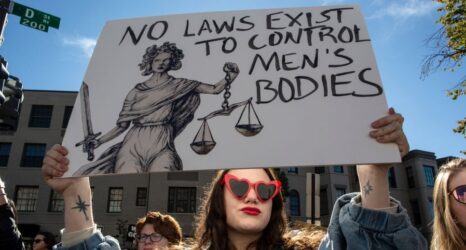A new report analyzing media portrayals of reproductive health and rights found that plot lines in the post-election climate were more likely to depict abortions as a means of bodily autonomy, connecting more dots between abortion access and broader human rights issues for viewers. But despite an insurgence of progressive and pointed political statements, many shows still miss the mark.
Abortion Onscreen in 2017, published by Advancing New Standards in Reproductive Health (ANSIRH), seeks to emphasize the ways in which media portrayals of abortion influence both political and societal views on reproductive rights. The organization exalts media accountability for an accurate portrayal of reproductive health, maintaining that “reproductive wellbeing cannot be achieved without recognizing and challenging structures of inequity.”
22 cable and network shows whose 2017 seasons featured abortion plot lines depicted the decision to terminate a pregnancy as a metaphorical assertion or revocation of agency. Several characters were unable to choose for themselves whether or not to seek an abortion, symbolizing a lack of self-sovereignty; ANSIRH notes that “this theme of control, coercion, danger and risk is more pronounced this year than in previous years.”
The post-election climate has arguably prompted media makers to produce more politically conscious content. This season of American Horror Story made the social repercussions of the 2016 election the centerpiece of its plot; the highly-acclaimed televised adaptation of Margaret Atwood’s dystopian novel The Handmaid’s Tale depicted the callous execution of an abortion provider in its pilot episode to demonstrate to viewers how closely linked sexism and authoritarianism can be.
These types of storylines can serve to challenge the status quo and turn social views of abortion on their head. Unfortunately, they remain outliers.
A strong correlation persists in media representations of the topic between abortion and death, with 9 percent of fictional abortions directly resulting in fatality even though the actual statistical likelihood that abortion will result in death is 0 percent. Of the 22 shows included in the report, only half feature storylines that result in characters actually obtaining an abortion; of those characters contemplating abortion, 87.5 percent were white and 32.5 percent were under the age of 20, even though only about 36.1 percent of women seeking abortions are white and 57.8 percent were between the ages of 20 and 29. Though the most common reason for fictional characters seeking abortion is potential interference with future prospects, a majority of actual women seeking abortion cited a lack of financial means to care for a child as the sole motivating factor behind their decision. The report’s authors warn that these misrepresentations contribute “to a perception that abortion is a want—rather than a need.”
Abortion Onscreen seeks to bridge the perceived gap “between media portrayals, historical moments and the political and social climate around abortion in the United States.” As the Trump administration takes increasing aim at women’s reproductive rights and access to abortion and birth control—not just in the U.S., but around the world—it’s more pivotal than ever that creators think critically about how media portrayals of women’s lives impact women’s actual lived experiences.
Sarah Alexander is a recent graduate of Cal State Northridge. In addition to being a writer, she is a visual and performing artist, and attempts to use film, music and online platforms to spark conversation about social activism. She is an anomalous LA native, which affects her personality in a plethora of unique ways.





